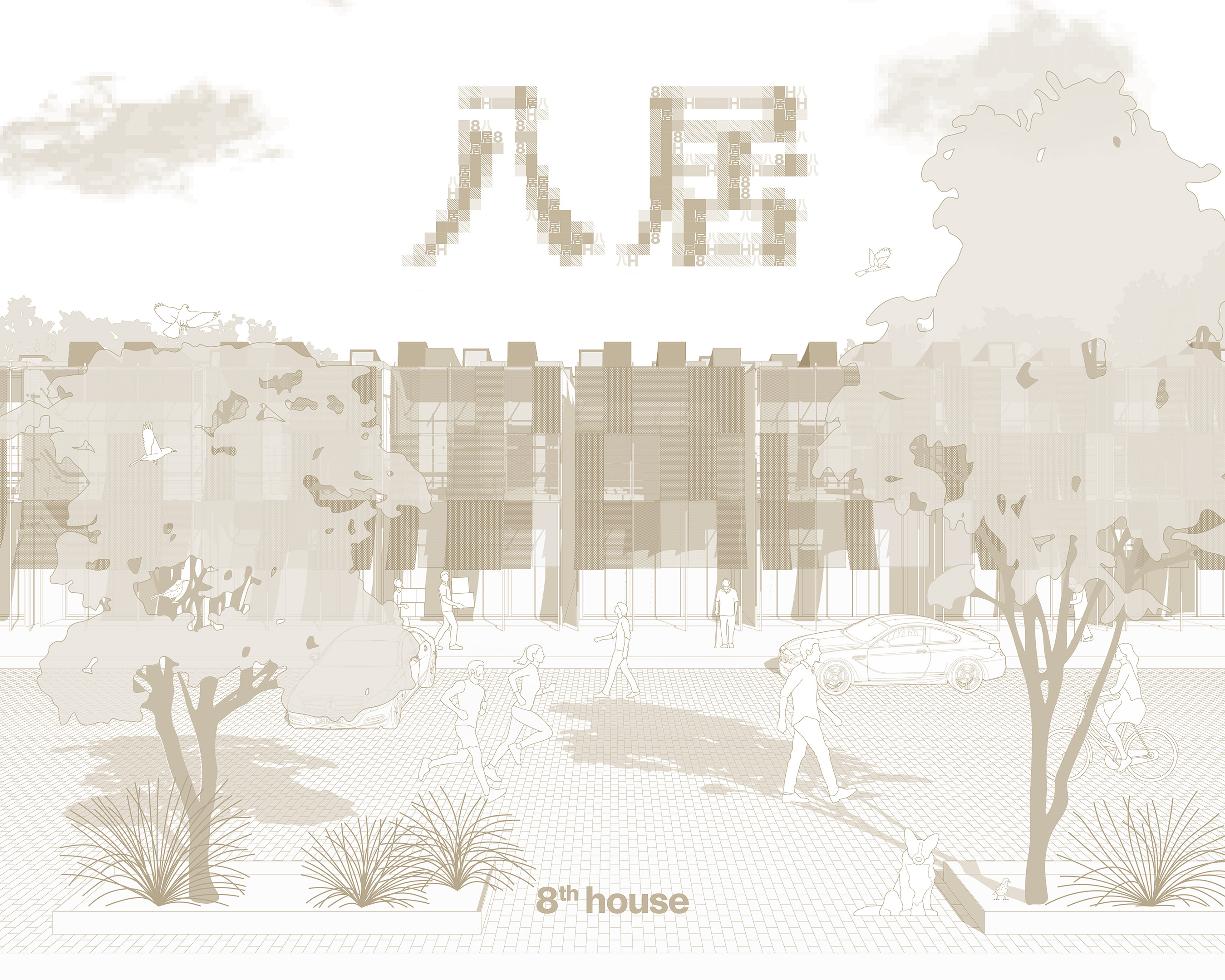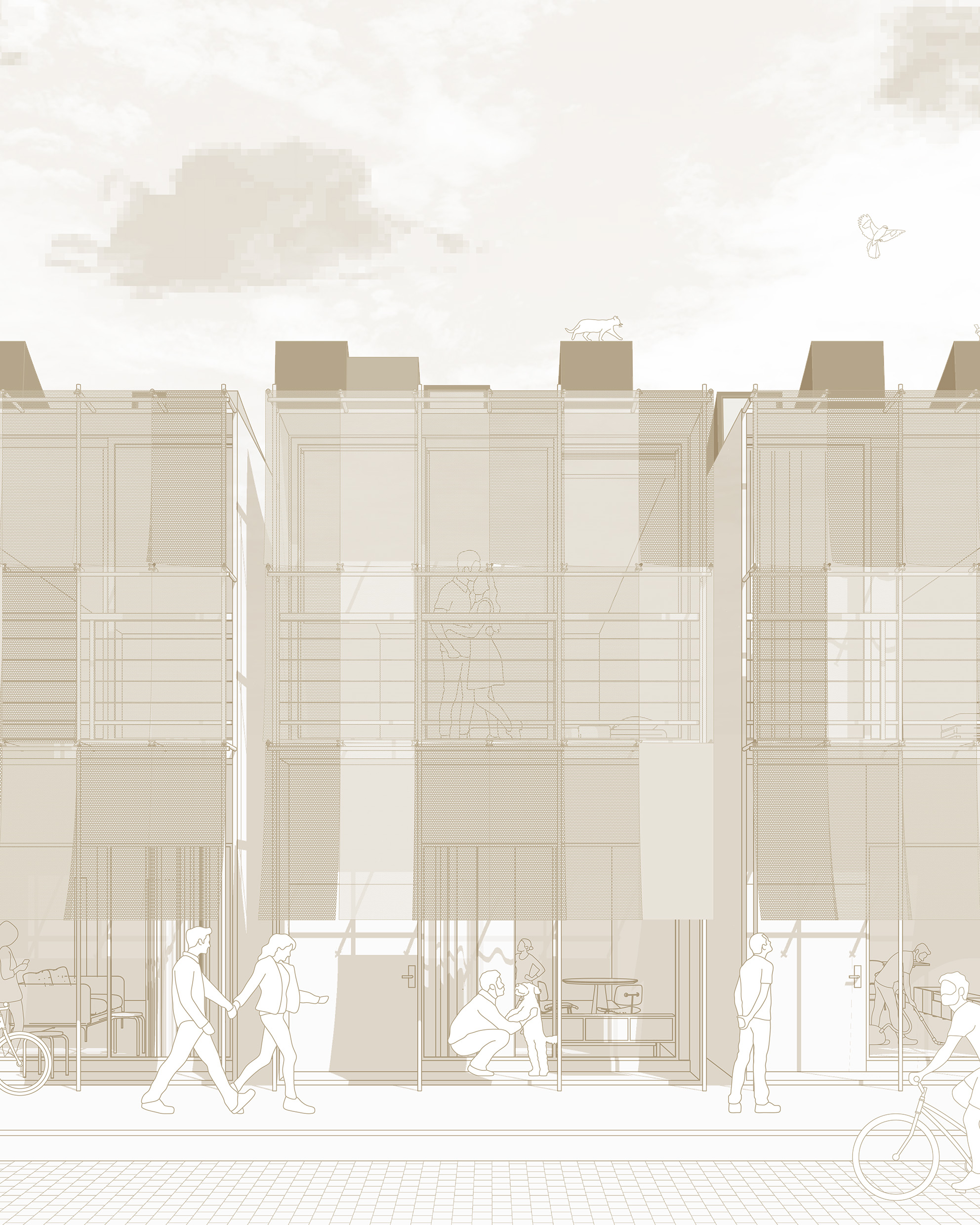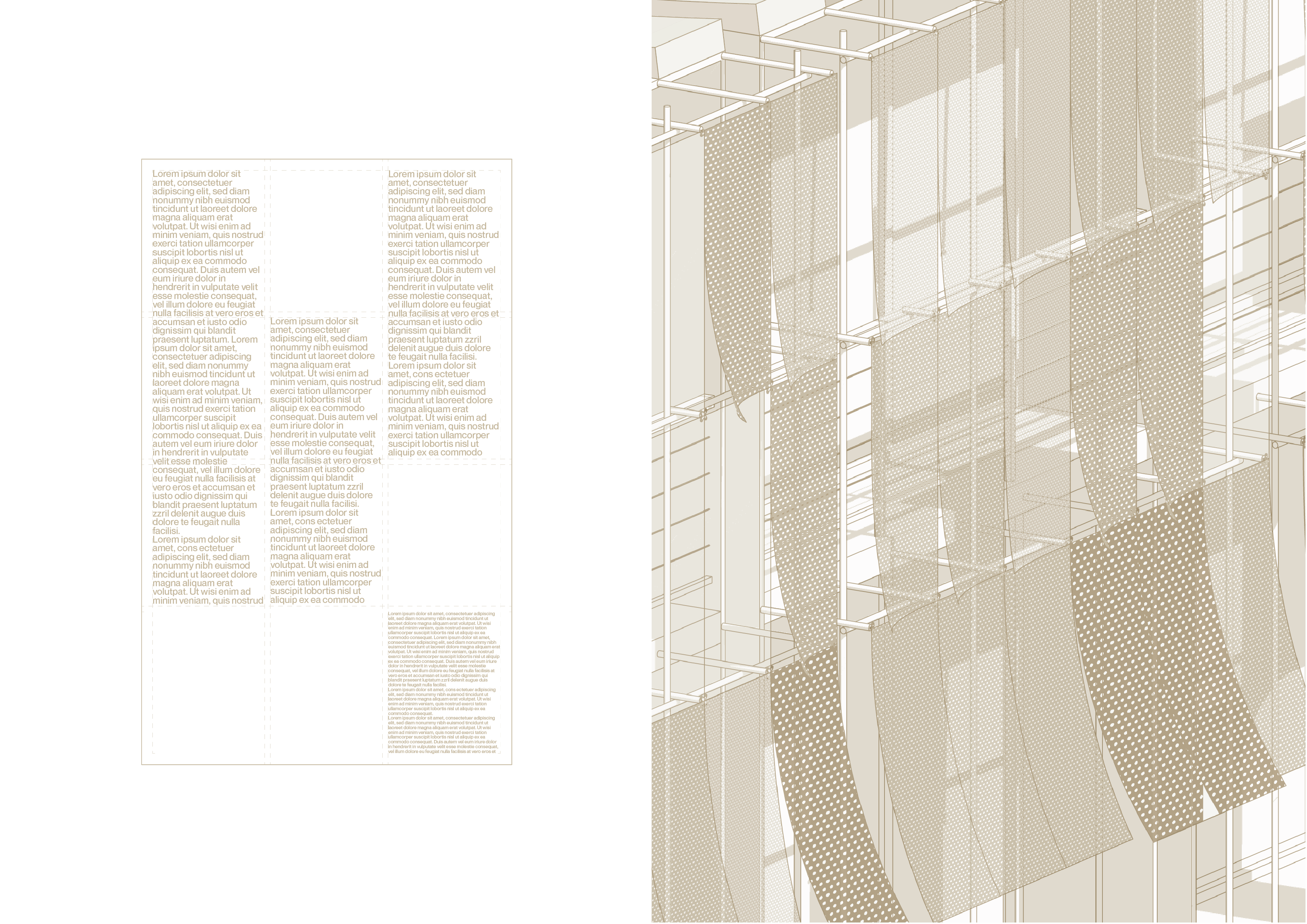
Developing an interwoven visual and spatial identity
Architectural and graphic design have long been in dialogue with each other, often through their disciplinary intersection of environmental graphic design. Architects and spatial designers alike use architectural visualisations, drawings and other mediums to communicate their design concepts and ideas. On the other hand, the existence of a visual identity within an architectural context is never used to communicate the design of a built environment, rather to communicate a brand entity that exists within the space.
This research explored methods and strategies to developing a visual identity that authentically communicates the intent of the architectural design, with the goal of creating a rich and nuanced interdisciplinary dialogue. This research adopts a systems- thinking approach that simultaneously considers various design components, the design brief, and final outcome; developing both the architectural design and the visual identity conjointly, allowing ideas to interlink and cross-pollinate.
This research concludes that for a rich and nuanced visual identity to occur, the design concept needs to contain a systematic approach that can apply to both disciplines from the beginning, rather than developing the visual identity after a singular architectural design concept, as the latter limits the extent to which the two disciplines can interact and communicate. The findings serve as an example for multidisciplinary engagement between spatial designers and graphic designers, both of whom can benefit from incorporating the other discipline into their design processes.




